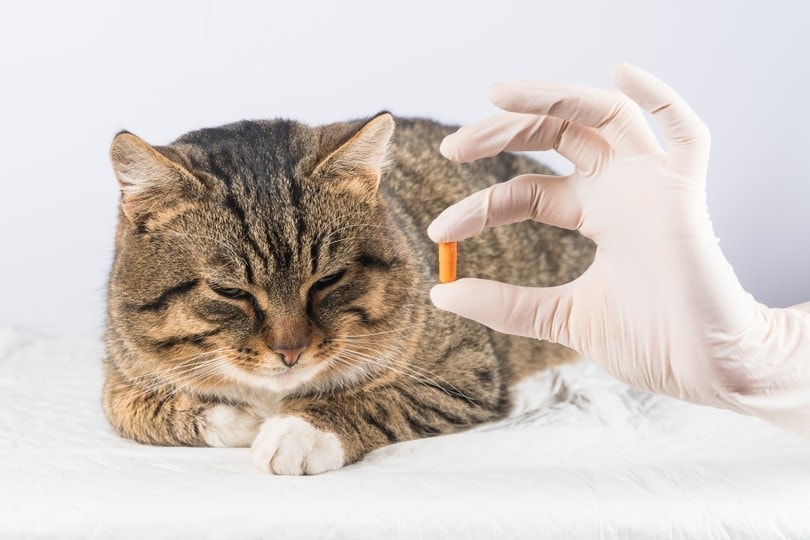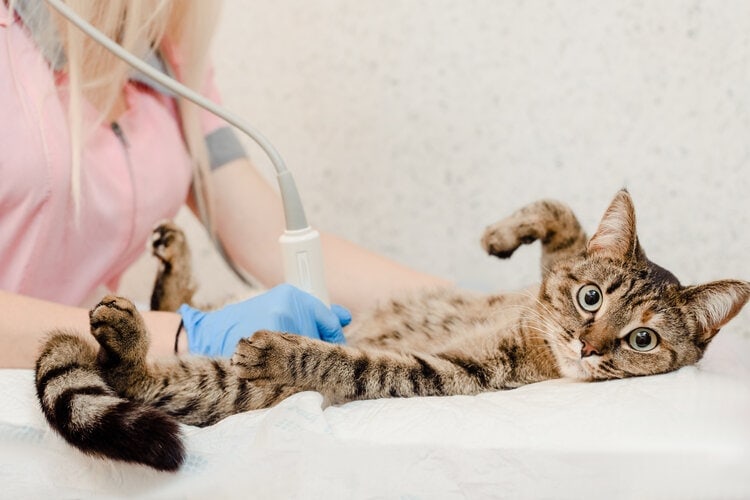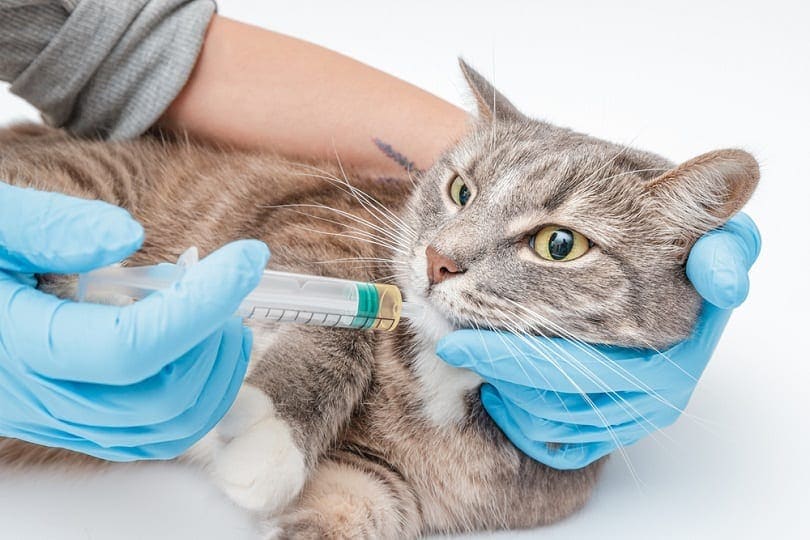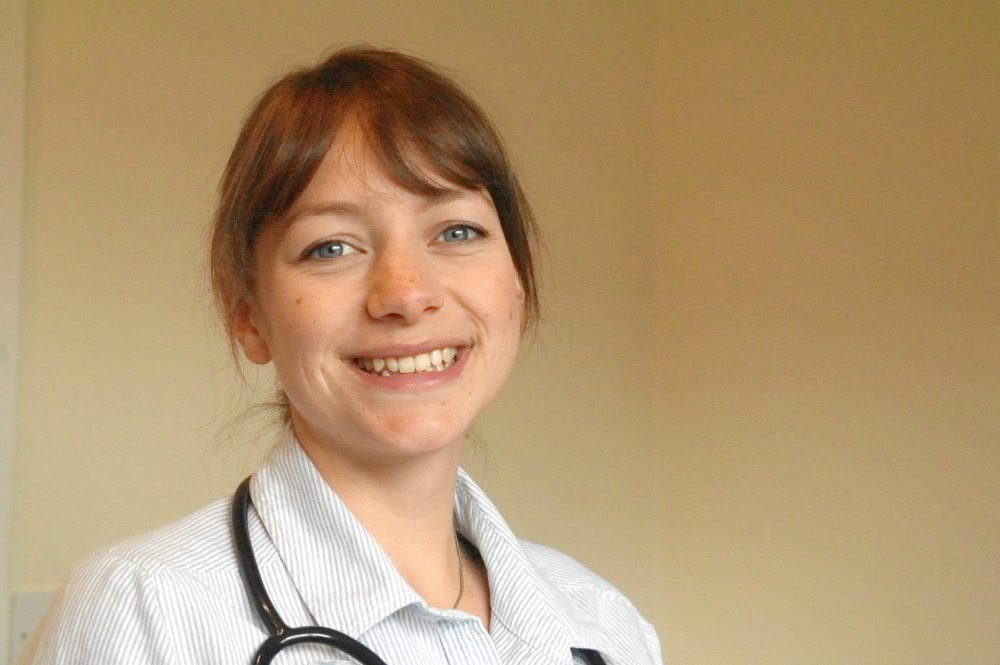How Do Vets Sedate Cats? Learning From The Experts (Vet Answer)

Updated on

As many cat owners know, seeing the vet is, unfortunately, not a generally enjoyable experience for our feline friends. Most cats prize their autonomy and like to have some degree of control over their environment. Being wrangled into a carrier, riding into a noisy car, and then enduring a busy vet clinic’s waiting area is not exactly their idea of a good day.
Adding insult to injury, they are likely to be handled by a stranger with a weird metallic instrument around their neck (who may or may not smell like a dog!) and be asked to stay very still through a thoroughly undignified examination. Even for the most laid-back cat, it’s a scary experience. And when it comes to our more nervous felines? It can be downright impossible to get them the help they really need.
So, when necessary, how do vets go about sedating cats?
What Is Sedation?
Simply put, sedation is the action of administering a sedative medication to produce a state of calm or sleep in a person or an animal. Sedation can be mild, moderate, or deep, and the different states can be desirable under different circumstances.
For example, a generally relaxed and cooperative cat might just need mild sedation to tolerate having an IV catheter placed for routine surgery. The sedation given will also provide additional pain relief in advance of the procedure.
Alternatively, a very nervous and aggressive cat might need a significant level of sedation to allow the same procedure. Each patient and each situation will be different.
Sedation is different from being under general anesthesia since a sedated cat is usually still responsive. However, the line between very deep sedation and anesthesia can become blurry, and most veterinary teams monitor a deeply sedated patient in the same way they would monitor a patient under a general anesthetic.

Why Would a Cat Need to Be Sedated?
Like us, some cats feel confident when they go to the doctor, and some do not. Whether a cat will need sedation and to what degree will usually boil down to the interplay of two factors:
- The cat’s personality and response to stress
- The type of intervention needed
Personality
Some cats can be relaxed and cooperative at the vet’s, especially in a calm environment and with gentle handling. They can tolerate a lengthy physical examination without any qualms, a quick injection, or even sampling blood with gentle restraint.
Some other cats feel very nervous and not confident but will respond by freezing, allowing for similar gentle and quick interventions before heading home. Regardless of the circumstances, some cats become so worried and upset at the prospect of being handled that they can barely be examined and will not tolerate even minor interventions.
They generally benefit from sedation for their own sake and the veterinary team’s sake. In an ideal world, a conversation about sedating them at home can even be had in advance since the whole experience can be a lot less triggering if the cat can mellow out long before the process begins. We will revisit this later, but bear this in mind if your cat finds trips to the vet’s difficult.
The Type of Procedure
For rapid and outpatient interventions, such as a vaccination or obtaining a blood sample, every effort is usually made by the veterinary team to avoid sedation at the clinic, as it would be of limited benefit. There are always exceptions, but most cats, even grumpy ones, can receive a wellness check and be given an injection with gentle and skilled restraint if necessary.
If a procedure requires a bit more time, like taking an X-ray, lying down quietly for 20 minutes for an ultrasound, or if the procedure itself is a bit uncomfortable, sedation is often the kindest option. This also allows the vet to do the best job they can with a more cooperative patient.
Some rare instances also warrant sedation without delay, such as when a cat is admitted to an emergency after being injured or experiencing breathing difficulties. Here, sedation is given not only for rapid pain relief but also to help the patient calm down, catch their breath, and allow the team to help them.

How Can Cats Be Sedated?
Cats are usually sedated either by injection at the clinic or orally (by swallowing a pill) ahead of time at home. The way the injection is given (under the skin, in the muscle, or in the vein) and what kind of medication is chosen will usually depend on the level of sedation desired and the cat’s personality.
A vet will decide on a particular combination tailored to each patient and situation. Sedation can be “topped up” if needed or “upgraded” to a full general anesthetic should the situation require it. Oral sedation at home is not a new concept but used to be reserved for those very aggressive, can’t-be-handled patients.
There wasn’t a vast array of medications that could be used safely. Fortunately, over the last few years, things have somewhat changed. Medications with fewer side effects have become available, and more studies have been done to highlight their benefits when used preemptively in decreasing a nervous cat’s overall experience of the fight-or-flight reaction.
In many cases, this approach to sedation prevents the whole build-up of stress, fear, and anticipation and can allow for a much more pleasant visit for everyone involved. More vets are keen to talk to owners about this option, which usually involves giving a pill (or a combination of pills) a few hours before the carrier even comes out. Although it’s not an option for every patient, it is good to know it is another tool owners and veterinary teams have at their disposal.
Owners should always check with their vet before every visit before giving the medication, even if it has worked very well in the past. This is especially true if the cat feels ill since sedation will likely not be recommended. As a side note, it is also worth mentioning that a few years back, it was not uncommon for vets to reach for a gas anesthetic to sedate very aggressive cats.
Although there may be instances where this could still be needed as a last resort, the approach has widely fallen out of favor throughout the veterinary field. Though no one likes needles, an injection is usually considered significantly less stressful and unpleasant for the cat and, ultimately, a lot safer.

What Other Ways Can an Owner Help Their Cat Stay Calm When Visiting the Vet?
While there is sadly no silver bullet to make a vet visit feel suddenly appealing to our feline friends, some owners find these approaches helpful to reduce anxiety:
- Staying calm and speaking in a reassuring, relaxed voice.
- If the cat appreciates it, stroking them inside their carrier or letting them rub their head against their owner’s hand.
- Strategically covering the carrier so the cat doesn’t have to see other animals while waiting or in transit.
- Synthetic pheromones, such as Feliway®, can be sprayed on bedding or a towel inside the carrier. The idea behind using synthetic pheromones is to replicate the state of security and comfort cats normally associate with marking their own familiar environment. Pheromones usually have a rapid onset of action.
- Some owners find catnip to be great at helping their cat relax but bear in mind that this effect is very cat-dependent. Indeed, catnip can have the opposite effect on some cats and make them feel wired and anxious. It is best to experiment with small amounts ahead of time to see if catnip has the desired effect rather than trying it for the first time in a carrier on the way over to the vet.
Conclusion
Sedation is a great tool for mitigating stress and discomfort for some of our feline friends when they visit the vet. It also allows veterinary teams to help them to the best of their ability. “Preemptive” oral sedation is becoming a more widely available option for many nervous cats, leading to somewhat less stressful visits and more compliant patients, which is great news for everyone involved!
See Also:
- How Do Vets Get Urine Samples from Cats? Our Vet Explains
- How Much Does a Cat X-Ray Cost? Pricing Update
Featured Image Credit: Nestor Rizhniak, Shutterstock













